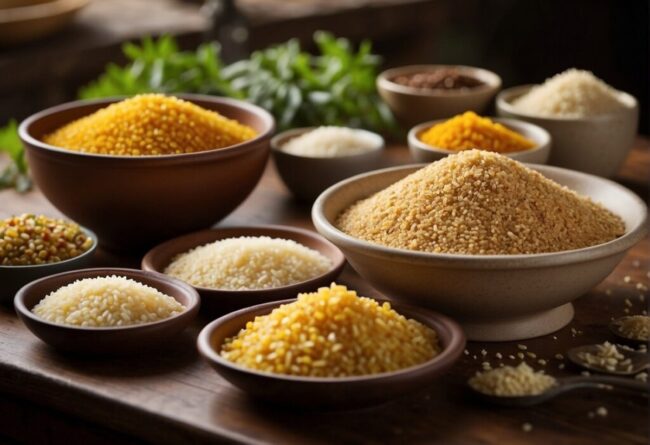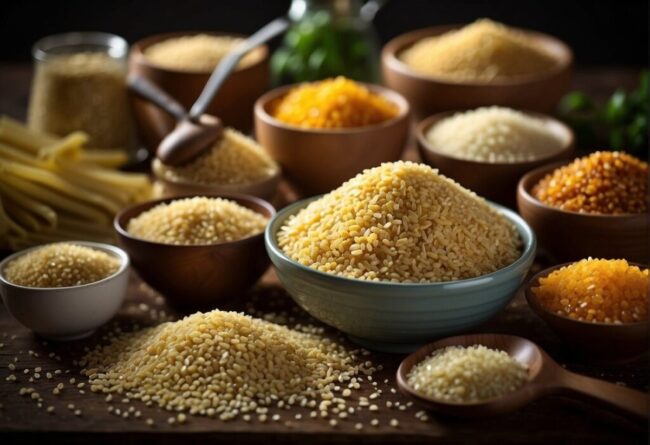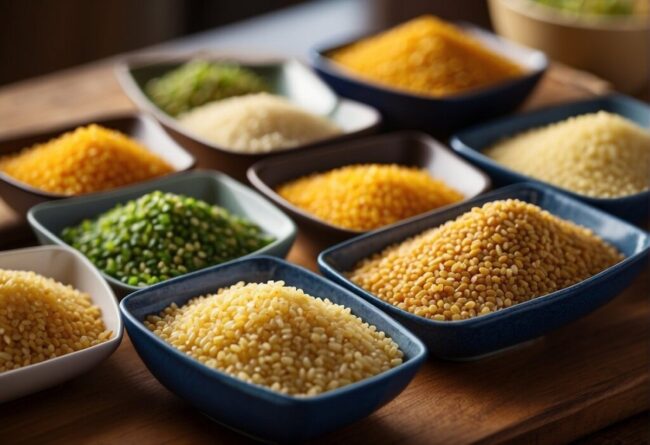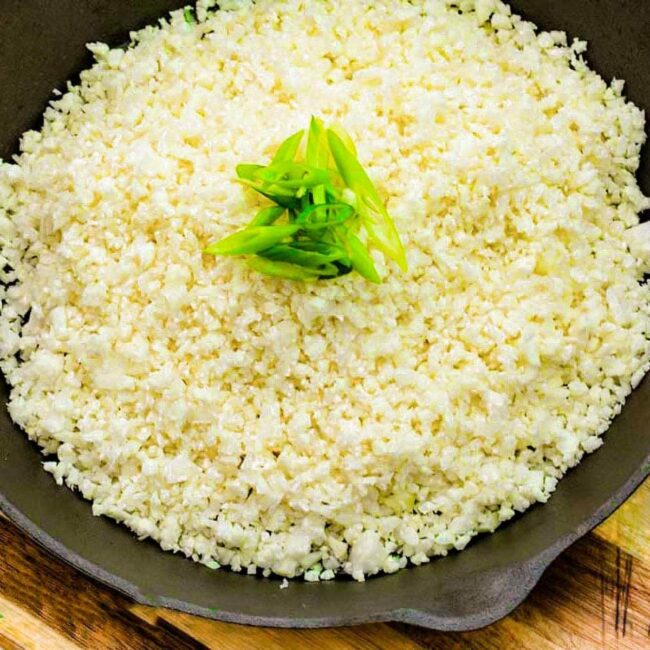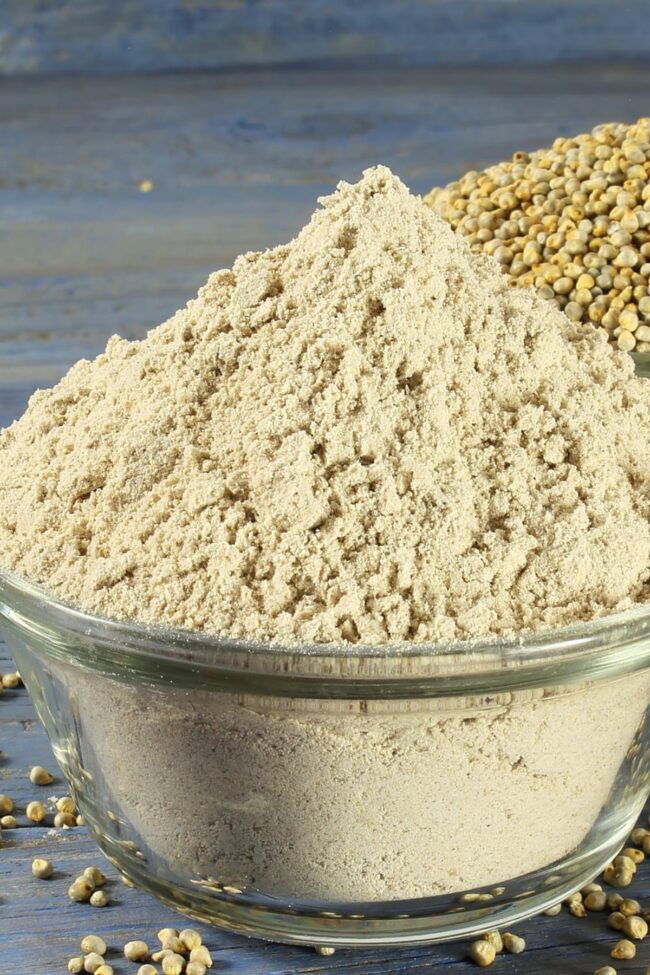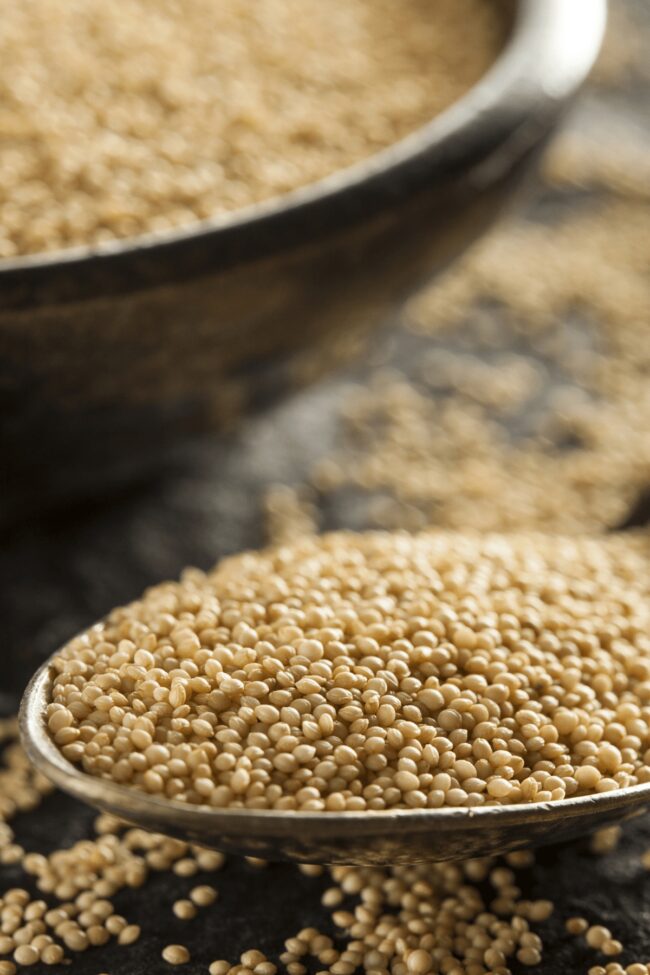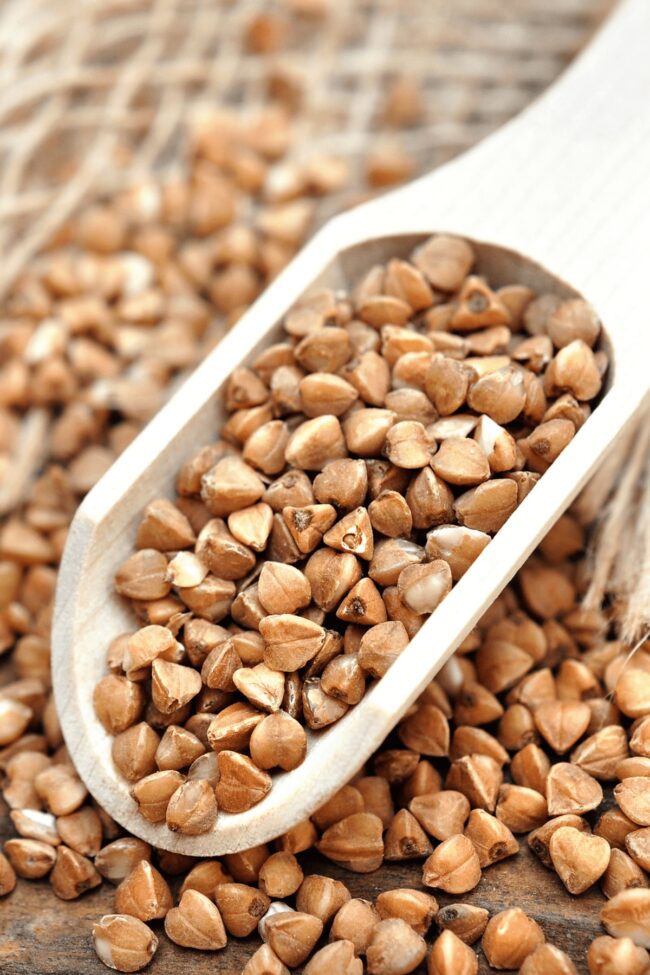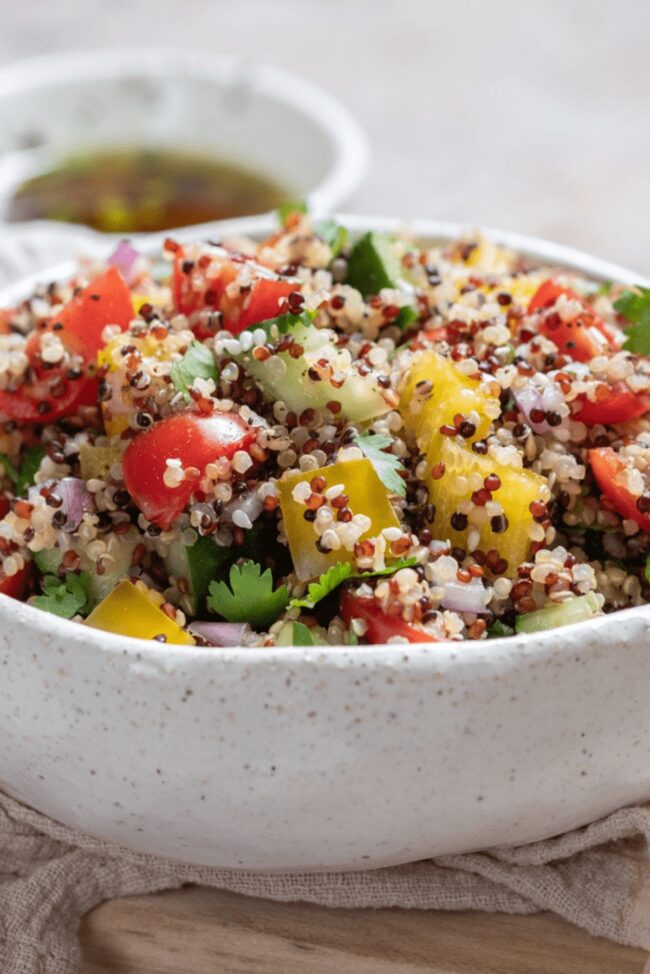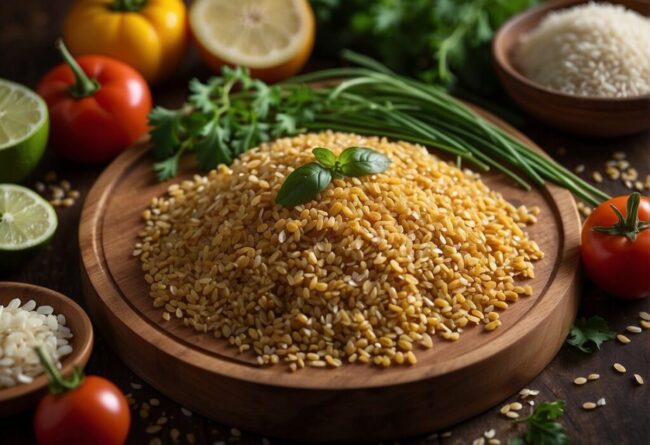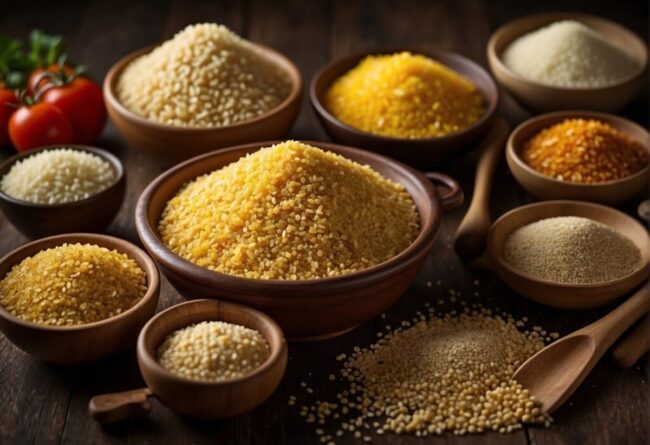13 Delicious Couscous Substitutes You Might Already Have
Couscous substitutes help when this tiny grain isn't on hand or doesn't fit dietary needs.
Some options match its light, fluffy texture, while others bring unique flavors or nutritional benefits.
Whether crafting a warm side dish or a hearty salad, different ingredients can step in.
A perfect alternative keeps meals satisfying without compromising taste or texture.
What Is Couscous?
Couscous holds a special place in North African culture, particularly within Moroccan cooking.
The main ingredient comes from semolina, which is made from durum wheat.
Known for its fluffy texture when cooked, couscous easily absorbs flavors from herbs and spices.
This grain serves as a great base for both sweet and savory dishes.
Preparing it involves steaming until soft yet not mushy, allowing the grains to swell beautifully.
Unlike pasta made with flour, couscous has a unique granular quality that enhances its versatility in various recipes worldwide.
With approximately 6 grams of protein per cup, it contributes to your daily intake while complementing various dishes.
Carbohydrates make up about 36 grams of each serving, providing energy for your day-to-day activities.
The fiber content adds a subtle health boost, offering around 2 grams to support digestion.
single cup provides an impressive amount of selenium, crucial for antioxidant protection and immune function.
Essential B vitamins like niacin, folate, and vitamin B6 contribute to energy production and overall well-being.
Iron, magnesium, and phosphorus found in couscous play vital roles in oxygen transport as well as maintaining strong bones.
Why Replace Couscous?
Replacing couscous allows for more dietary flexibility and variety. Grain and vegetable-based alternatives provide different textures and nutrients.
Gluten Issues and Celiac
Living with gluten sensitivity or celiac disease can be challenging, especially when it comes to enjoying meals.
Couscous often makes its way into recipes but can cause discomfort for those affected.
Gluten-free alternatives like millet and quinoa present excellent options that mimic the texture of couscous without compromising health.
These grains not only add variety to your diet but also deliver nutritional benefits such as high protein and fiber content.
Switching to these substitutes opens up a world of delicious possibilities while keeping your meals safe and satisfying.
Need for Change
Exploring alternatives to couscous can breathe new life into your meals.
Different grains and legumes offer exciting textures that can transform familiar dishes.
Quinoa, farro, or even riced cauliflower provide a fresh twist and unique flavor profiles.
Each option invites culinary creativity, allowing you to mix herbs and spices in ways that surprise your palate.
Elevating everyday dining experiences opens doors to delicious adventures in the kitchen.
Varied Food Requirements
Quinoa serves as a fantastic alternative for those looking to boost protein and dietary fiber intake.
This ancient grain, known for its nutty flavor, is packed with essential amino acids and nutrients.
Choosing quinoa can enhance meal variety while meeting specific dietary needs without gluten concerns.
Its versatility allows it to shine in salads, bowls, or as a side dish alongside your favorite proteins.
Incorporating this superfood into daily meals might just elevate your nutritional game significantly.
Tastes and Texture Choices
Exploring new textures and flavors can elevate your meals in exciting ways.
Cooked rice introduces a tender bite that contrasts with couscous, offering a different culinary experience.
Cauliflower rice adds a light, fluffy element while bringing added nutrition to the table.
Millet stands out with its slightly sweet and nutty notes, providing an interesting twist on traditional grains.
Trying these alternatives opens up fresh avenues for creativity in your cooking routine.
Couscous Alternatives with Grains
Grain-based couscous alternatives offer a fresh spin on classic recipes by incorporating different grains. They bring unique textures and subtle flavors that enhance every dish.
Quinoa
Quinoa offers a delightful blend of nutrition and versatility.
Its unique texture complements various dishes, transforming simple meals into something special.
A quick cooking time means you can whip up a nutritious side dish in no time at all.
This gluten-free grain shines when added to salads, giving them an extra boost of protein and flavor.
You’ll appreciate how easily it adapts to both savory and sweet recipes, enhancing your culinary adventures effortlessly.
Rice Varieties
Rice serves as a versatile alternative to couscous, allowing you to explore diverse flavors and textures.
Short-grain rice yields a pleasantly sticky dish, while long-grain options like Basmati or Jasmine provide lightness and neutrality in taste.
Preparing rice involves using a simple ratio of one cup of rice to two cups of water; adjusting the cooking time based on the specific type ensures perfect results.
Cold salads can benefit from this swap, enhancing freshness without overpowering other ingredients.
Stuffed vegetables or hearty stews also shine when paired with fluffy grains instead of traditional couscous.
Bulgur Wheat
Bulgur wheat serves as a fantastic base for various meals, offering a chewy texture that adds interest to every bite.
Its nutty flavor pairs beautifully with fresh herbs and vegetables, making it a versatile ingredient in many dishes.
Tabbouleh shines when made with bulgur, showcasing its ability to absorb flavors while providing essential nutrients.
Preparing this grain is effortless; just combine it with boiling water and let it rest until tender.
Incorporating bulgur into your diet can elevate simple recipes into something satisfying and wholesome.
Barley
Barley adds a delightful texture and depth to various dishes.
The nutty flavor pairs beautifully with vegetables, making it an excellent choice for salads and hearty soups.
Cooking barley is straightforward, requiring just a simple simmer in water until tender.
This grain shines when used as a substitute for couscous in stuffed peppers, bringing its own unique character to the meal.
With its high fiber content, barley not only satisfies hunger but also supports digestive health seamlessly within your diet.
Millet
Millet is a tiny grain packed with potential, offering a delightful corn-like flavor that enhances any dish.
This gluten-free option stands out as an excellent substitute for couscous, catering to diverse dietary needs.
Toasting millet before cooking elevates its nutty essence and adds depth to your meals.
Fluffed millet can elevate salads or pilafs, while also complementing vegetables and proteins beautifully.
Versatile in nature, this grain invites creativity in the kitchen, what will you whip up today?
Gluten-Free Options for Couscous
Gluten-free substitutes for couscous provide a smart way to enjoy your meals without gluten. They deliver satisfying textures and versatile flavors that work well in any recipe.
Cauliflower Rice
Cauliflower rice serves as a fantastic alternative for those looking to cut carbs and avoid gluten.
This versatile ingredient can easily adapt to various cuisines, enhancing meals without the heaviness of traditional grains.
Preparing it is simple; just grate or pulse cauliflower until it achieves a fine, couscous-like consistency.
A quick steam or sauté ensures that it maintains a light and airy texture, perfect for absorbing flavors from sauces and seasonings.
Whether paired with stir-fries or used in salads, this option adds both nutrition and creativity to your plate.
Teff
Teff, a small yet powerful grain, packs a nutritional punch with its high calcium, iron, and protein content.
Often associated with Ethiopian cuisine through injera, this versatile ingredient can also mimic the texture of couscous beautifully.
Cooking teff requires just three parts water to one part grain for optimal results.
Steaming it until tender yields a delightful alternative that adds variety to your meals.
This ancient grain offers endless culinary potential while enriching your diet in an unexpected way.
Millet and Its Advantages
Millet adds a delightful nuttiness to meals while being quick to prepare.
This gluten-free grain serves as an excellent alternative for those seeking nutritious options.
Packed with essential vitamins and minerals, it supports a balanced diet effortlessly.
Cooking millet is straightforward; simply combine it with water in equal parts and simmer until fully absorbed.
Discovering new ways to incorporate this versatile ingredient can elevate your culinary creations significantly.
Amaranth
Amaranth offers a rich, nutty taste that enhances various dishes.
This gluten-free grain is packed with protein and fiber, making it a smart choice for health-conscious eaters.
Cooking it with less water than typical creates a light and airy texture, perfect for salads or side dishes.
Its versatility allows you to experiment in the kitchen easily; toss it into stir-fries or use as a base for hearty bowls.
Incorporating amaranth into meals not only boosts nutrition but also adds an interesting element to your culinary creations.
Buckwheat
Buckwheat is a remarkable grain that surprises many with its gluten-free status.
Its earthy, nutty flavor adds depth to various meals, making it a versatile choice for any kitchen.
Cooking buckwheat is as straightforward as preparing rice or oats, allowing for easy incorporation into your daily diet.
This unique ingredient shines when used in place of couscous, whether served warm in salads or chilled with fresh vegetables.
Trying buckwheat can elevate your culinary experience while introducing new textures and tastes to familiar recipes.
Quinoa for Gluten-Free Diets
Quinoa serves as a fantastic alternative to traditional grains.
Packed with essential amino acids, it stands out as a complete protein source for those seeking nutritious options.
Rich in fiber and various minerals, this grain supports digestive health while contributing to overall well-being.
Cooking quinoa is straightforward; just simmer it in water at a two-to-one ratio, then fluff with a fork for that perfect texture.
You might find its nutty flavor elevates your meals and adds depth to salads or bowls effortlessly.
Healthy Replacements for Couscous
Other healthy alternatives to couscous open up new avenues for nutritious dining. They let you enjoy well-balanced meals with a fresh take on classic dishes.
Vegetable Substitutes
Cauliflower offers a creative twist in the kitchen, transforming into fine granules that mimic couscous.
This low-calorie alternative packs a punch with essential vitamins, making it an attractive option for those watching their caloric intake.
Broccoli follows suit by being grated or processed to achieve a grain-like texture, adding vibrant green nutrition to meals.
Incorporating these vegetables enhances your dishes while promoting healthy eating habits.
Why not experiment with these versatile ingredients and elevate your culinary repertoire?
Legume-Based Options
Lentils stand as a remarkable source of protein, often ready to eat in no time.
Their hearty texture can seamlessly take the place of couscous in various recipes.
Packed with fiber and essential minerals, these legumes are a smart choice for health-conscious cooks.
Beans add another layer of versatility; black beans and chickpeas offer unique flavors that enhance any meal.
Each variety brings its own nutritional benefits, ensuring you have plenty to choose from when creating your next dish.
Cooking with Substitutes
Cooking with couscous substitutes requires adjusting liquid ratios and cook times. Choosing the right replacement ensures a similar fluffy texture.
Making Grain Alternatives
Substituting grains like quinoa or rice for couscous requires a few thoughtful adjustments in your cooking method.
Quinoa benefits from a thorough rinse to eliminate its natural bitter coating.
A simple 1:2 ratio of quinoa to water ensures perfect texture, followed by bringing it to a boil and simmering for about 15 minutes.
For rice, rinsing is key as it removes excess starch and helps achieve fluffiness.
Using a 1:1.5 ratio of rice to water allows the grains to cook evenly, usually taking between 10 and 20 minutes depending on the variety chosen; just keep an eye on that timing!
Gluten-Free Cooking Options
Cauliflower rice offers a versatile gluten-free alternative that can easily fit into various dishes.
Start by chopping the cauliflower into florets and pulsing it in a food processor until it achieves a couscous-like texture.
Light sautéing or gentle steaming enhances its natural flavor without turning it mushy.
This option shines in salads, soups, pilafs, and even as a base for porridge.
Unlike traditional couscous, which soaks up flavors during cooking, seasoning adjustments are essential after preparation to ensure every bite is flavorful.

